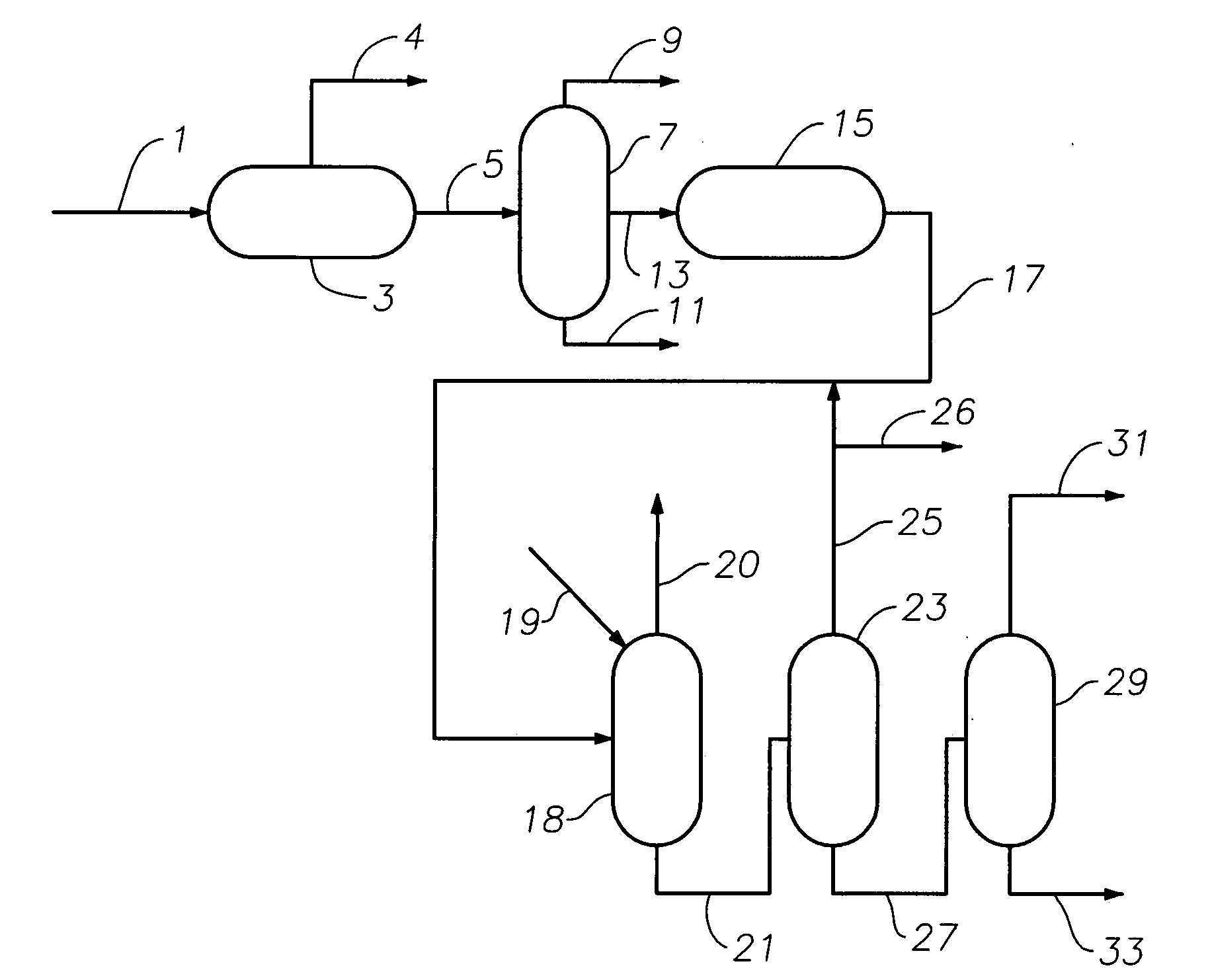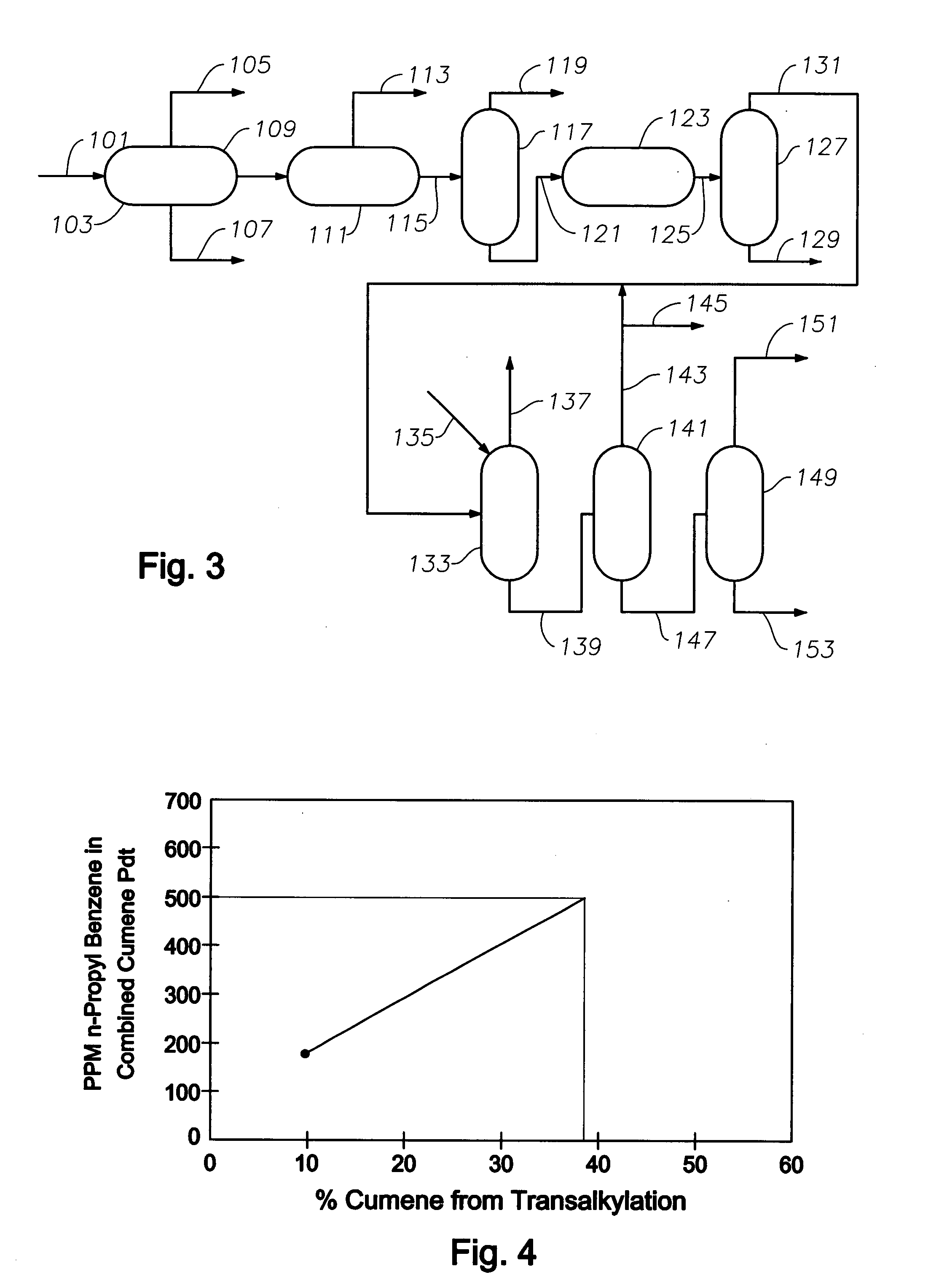Production of high purity cumene from non-extracted feed and hydrocarbon composition useful therein
a technology of high-purity cumene and non-extraction feed, which is applied in the direction of organic chemistry, naphtha treatment, hydrocarbon preparation catalysts, etc., can solve the problems of increasing the cost of high-purity cumene manufacture, increasing the cost of high-purity cumene production, and industrial disadvantage of by-product ethylbenzen
- Summary
- Abstract
- Description
- Claims
- Application Information
AI Technical Summary
Benefits of technology
Problems solved by technology
Method used
Image
Examples
example 1
[0171]Tests were carried out with a hydrocarbon composition feed comprised of 66 weight percent benzene and 34 percent by weight of 2-methyl-hexane. Propylene was present in the hydrocarbon composition feed in amounts such that the propylene to benzene mole ratio of the feed ranged from 0.20 to 1.0. The test was conducted by passing the feed over a MCM-22 catalyst at a temperature of 130° C. and at a pressure sufficient to maintain the benzene in the liquid phase. FIG. 5 plots propylene oligomer impurities and shows significantly lower propylene oligomer impurities in the practice of the present disclosure.
example 2
[0172]Tests were carried out with a hydrocarbon composition feed that comprised 66 weight percent benzene and 34 percent by weight of 2-methyl-hexane. Propylene was present in the feed in varied amounts, i.e., the propylene to benzene mole ratio was 1.0; 0.5; and 0.25. The test was conducted by passing the feed over a MCM-22 catalyst at a temperature of 130° C. and at a pressure sufficient to maintain the benzene in the liquid phase. Results of the tests are shown in FIG. 6 through FIG. 8. FIG. 6, which plots the degree of 2-methylhexane isomerization to 3-methylhexane, shows the practice of the present disclosure results in minimal isomerization of 2-methylhexane to 3-methylhexane. FIG. 7, which plots the amount of n-propylbenzene impurity at various space velocities, shows that the amount of n-propylbenzene formation was not significantly changed by space velocity. FIG. 8, which plots cumene selectivity versus benzene conversion, shows that the practice of the present disclosure r...
PUM
| Property | Measurement | Unit |
|---|---|---|
| Temperature | aaaaa | aaaaa |
| Temperature | aaaaa | aaaaa |
| Temperature | aaaaa | aaaaa |
Abstract
Description
Claims
Application Information
 Login to View More
Login to View More - R&D
- Intellectual Property
- Life Sciences
- Materials
- Tech Scout
- Unparalleled Data Quality
- Higher Quality Content
- 60% Fewer Hallucinations
Browse by: Latest US Patents, China's latest patents, Technical Efficacy Thesaurus, Application Domain, Technology Topic, Popular Technical Reports.
© 2025 PatSnap. All rights reserved.Legal|Privacy policy|Modern Slavery Act Transparency Statement|Sitemap|About US| Contact US: help@patsnap.com



